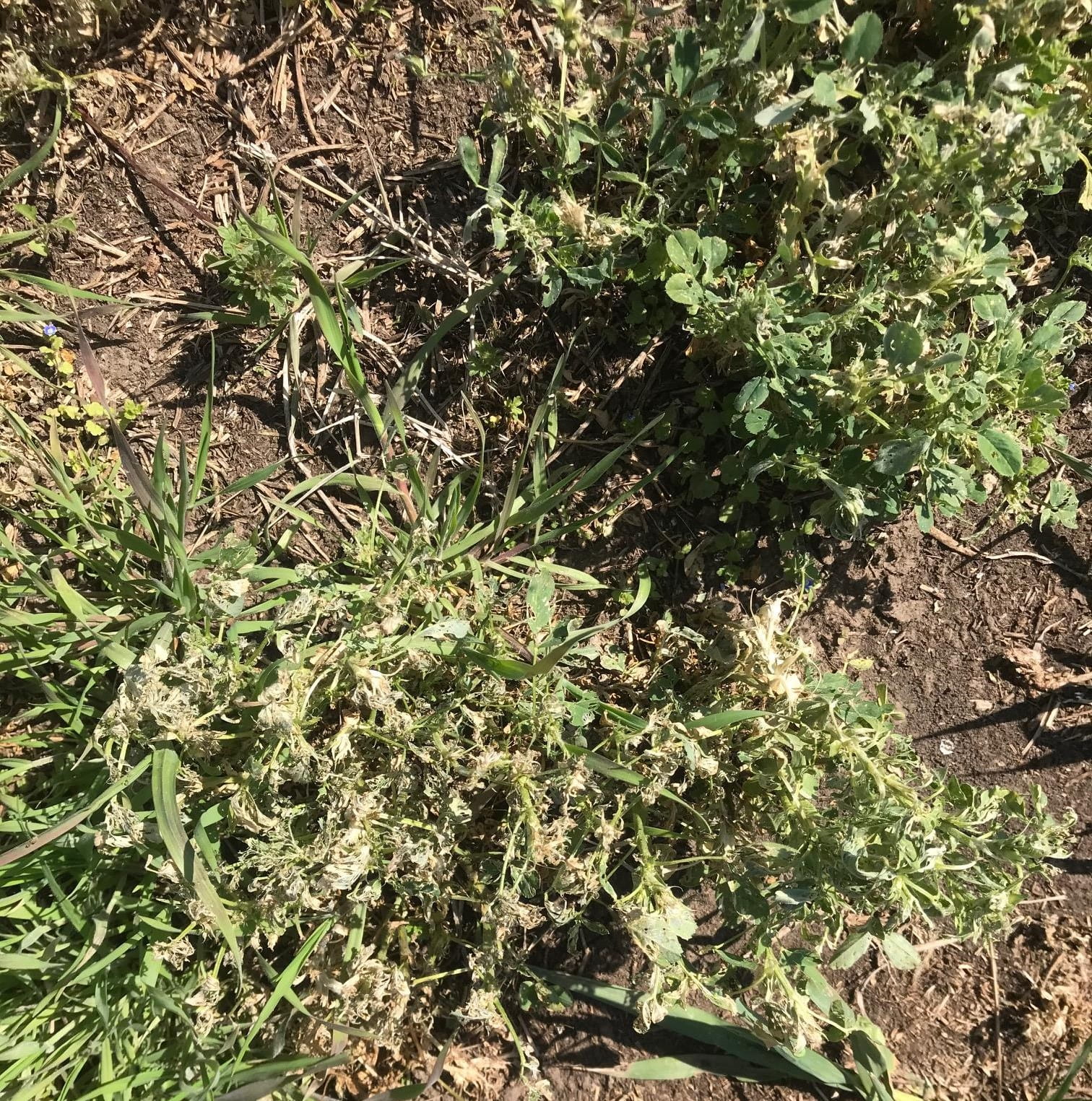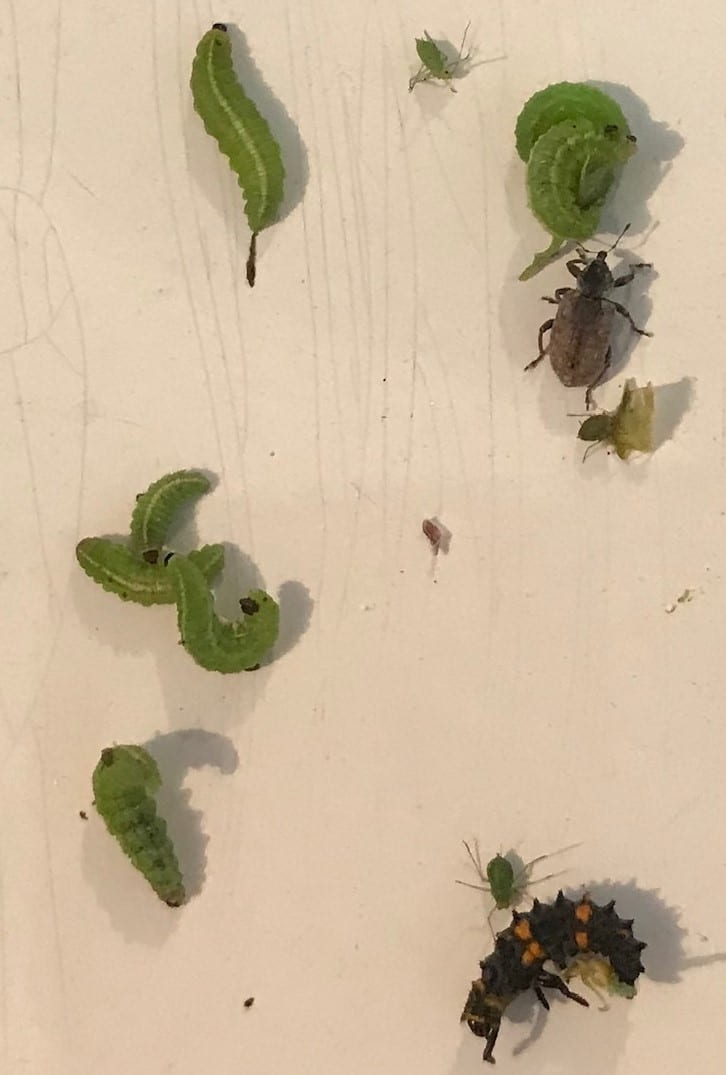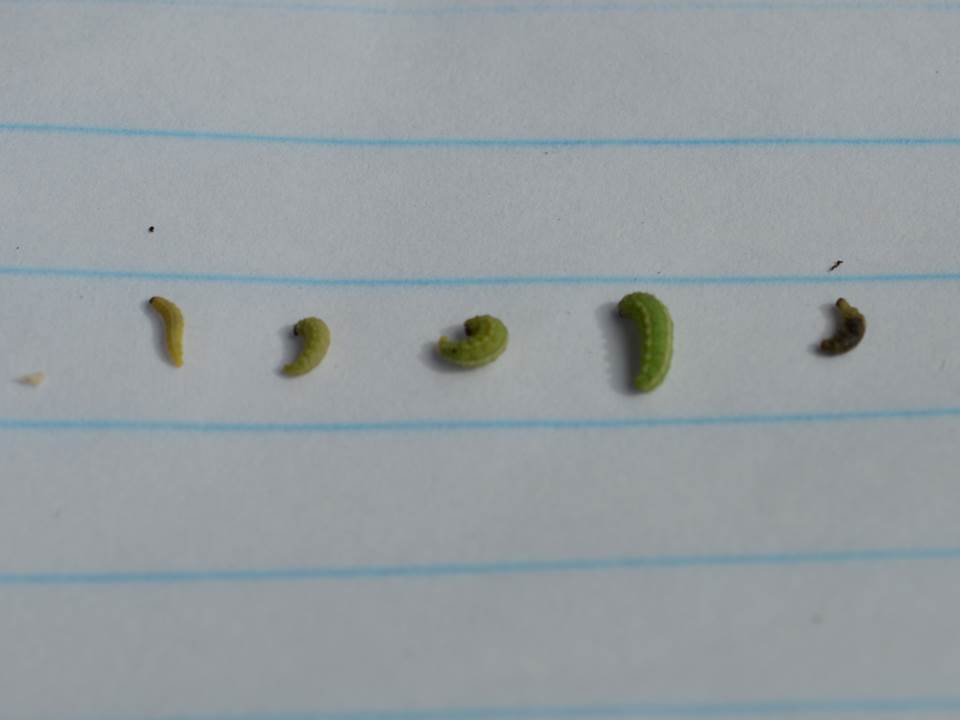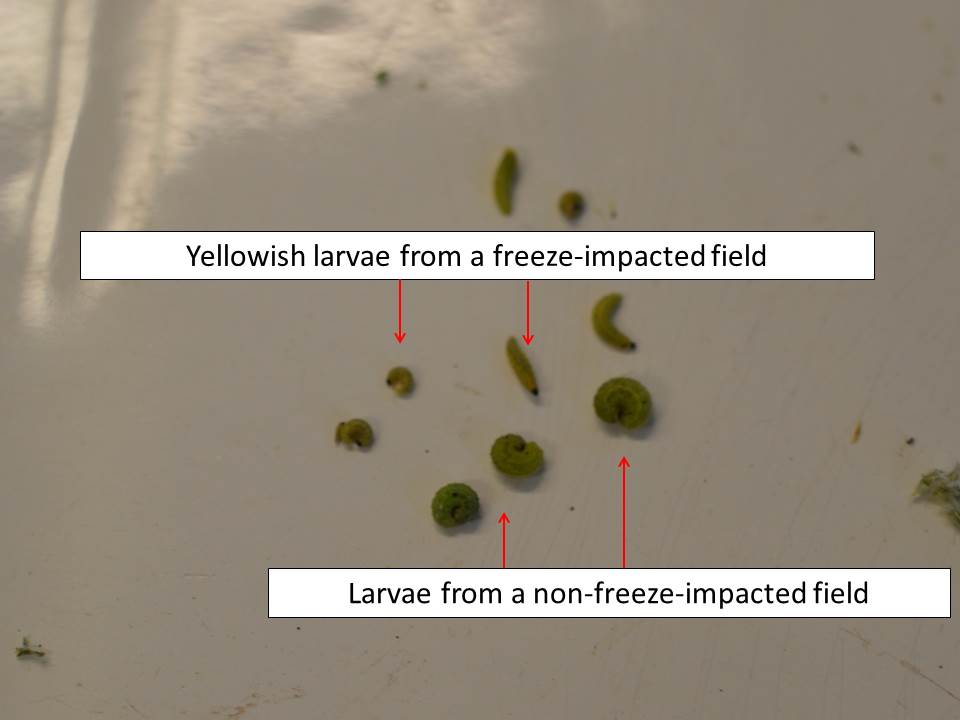–by Dr. Jeff Whitworth
Much of the alfalfa throughout north central Kansas was significantly affected by last week’s freezing temperatures, as previously noted. This is especially true of older, less robust stands, as indicated by the plants in the lower left portion of fig.1. Sampling these freeze-affected
Figure 1 Alfalfa affected by the freeze (by Cayden Wyckoff)
areas with a sweep net revealed only very few live alfalfa weevil larvae, i.e. an average of 1 live larvae/10 sweeps. However, the less freeze-affected plants (upper right portion of fig. 1) had a much more significant infestation, i.e. these areas averaged 26 live larvae/10 sweeps. The vast majority of alfalfa weevil larvae detected this week were mature larvae, and many were actually on the ground, see Fig. 2. probably preparing to pupate, as a few new adults were also detected, again, see Fig 2.
Figure 2 Mature Alfalfa weevil larvae, new adult AW plus aphids and Lady beetle larva (by Cayden Wyckoff)
Figure 3 Aphids and lady beetle larvae (by Cayden Wyckoff)
Aphid populations, both pea, see Fig. 3, and cowpea, seemed to have dramatically declined also. This is probably a combination of the freezing temperatures coupled with a healthy population of lady beetle larvae, see Fig. 3, which have been voracious feeders on these aphids.





